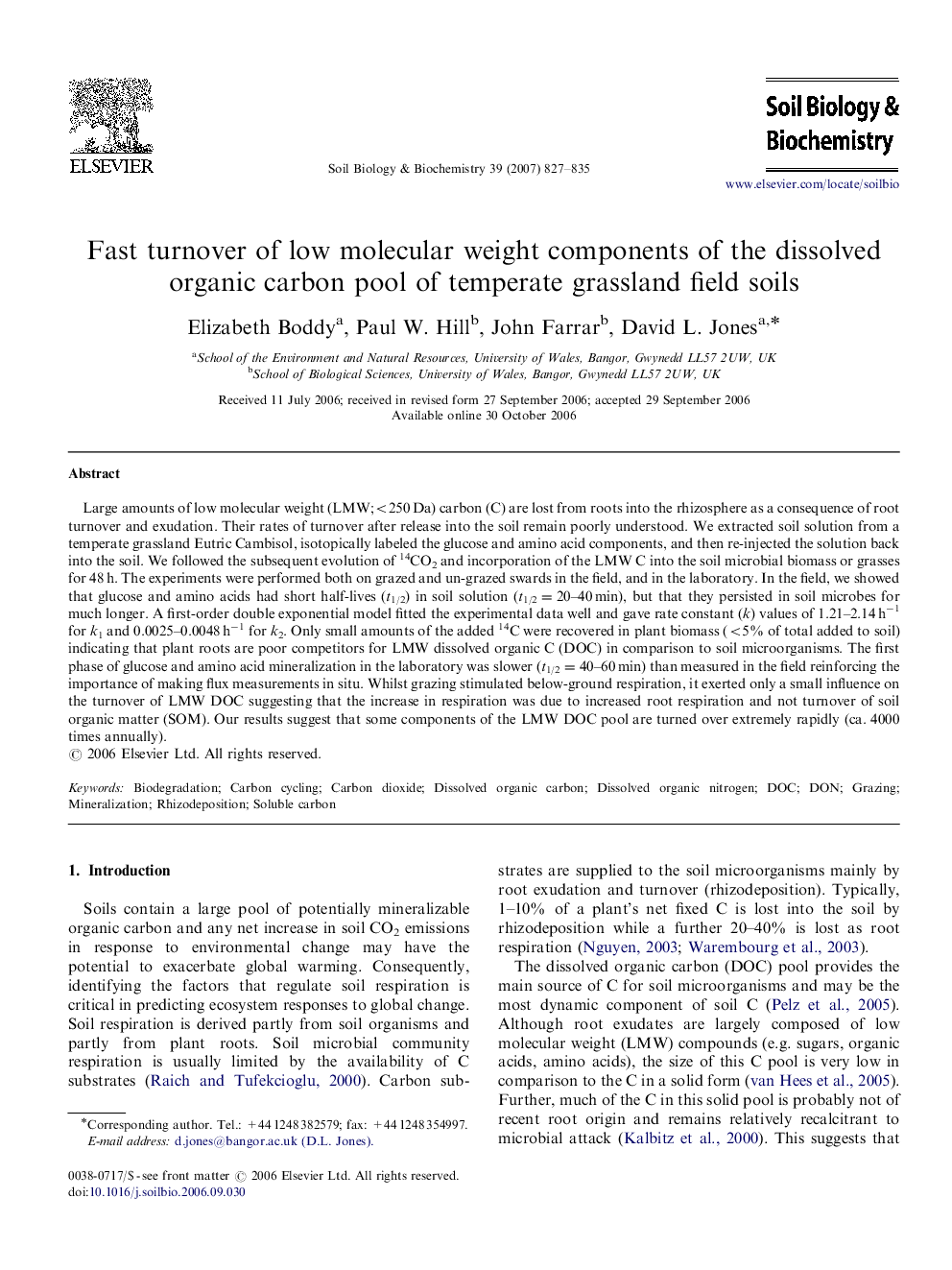| Article ID | Journal | Published Year | Pages | File Type |
|---|---|---|---|---|
| 2026354 | Soil Biology and Biochemistry | 2007 | 9 Pages |
Large amounts of low molecular weight (LMW;<250 Da) carbon (C) are lost from roots into the rhizosphere as a consequence of root turnover and exudation. Their rates of turnover after release into the soil remain poorly understood. We extracted soil solution from a temperate grassland Eutric Cambisol, isotopically labeled the glucose and amino acid components, and then re-injected the solution back into the soil. We followed the subsequent evolution of 14CO2 and incorporation of the LMW C into the soil microbial biomass or grasses for 48 h. The experiments were performed both on grazed and un-grazed swards in the field, and in the laboratory. In the field, we showed that glucose and amino acids had short half-lives (t1/2) in soil solution (t1/2=20–40 min), but that they persisted in soil microbes for much longer. A first-order double exponential model fitted the experimental data well and gave rate constant (k) values of 1.21–2.14 h−1 for k1 and 0.0025–0.0048 h−1 for k2. Only small amounts of the added 14C were recovered in plant biomass (<5% of total added to soil) indicating that plant roots are poor competitors for LMW dissolved organic C (DOC) in comparison to soil microorganisms. The first phase of glucose and amino acid mineralization in the laboratory was slower (t1/2=40–60 min) than measured in the field reinforcing the importance of making flux measurements in situ. Whilst grazing stimulated below-ground respiration, it exerted only a small influence on the turnover of LMW DOC suggesting that the increase in respiration was due to increased root respiration and not turnover of soil organic matter (SOM). Our results suggest that some components of the LMW DOC pool are turned over extremely rapidly (ca. 4000 times annually).
